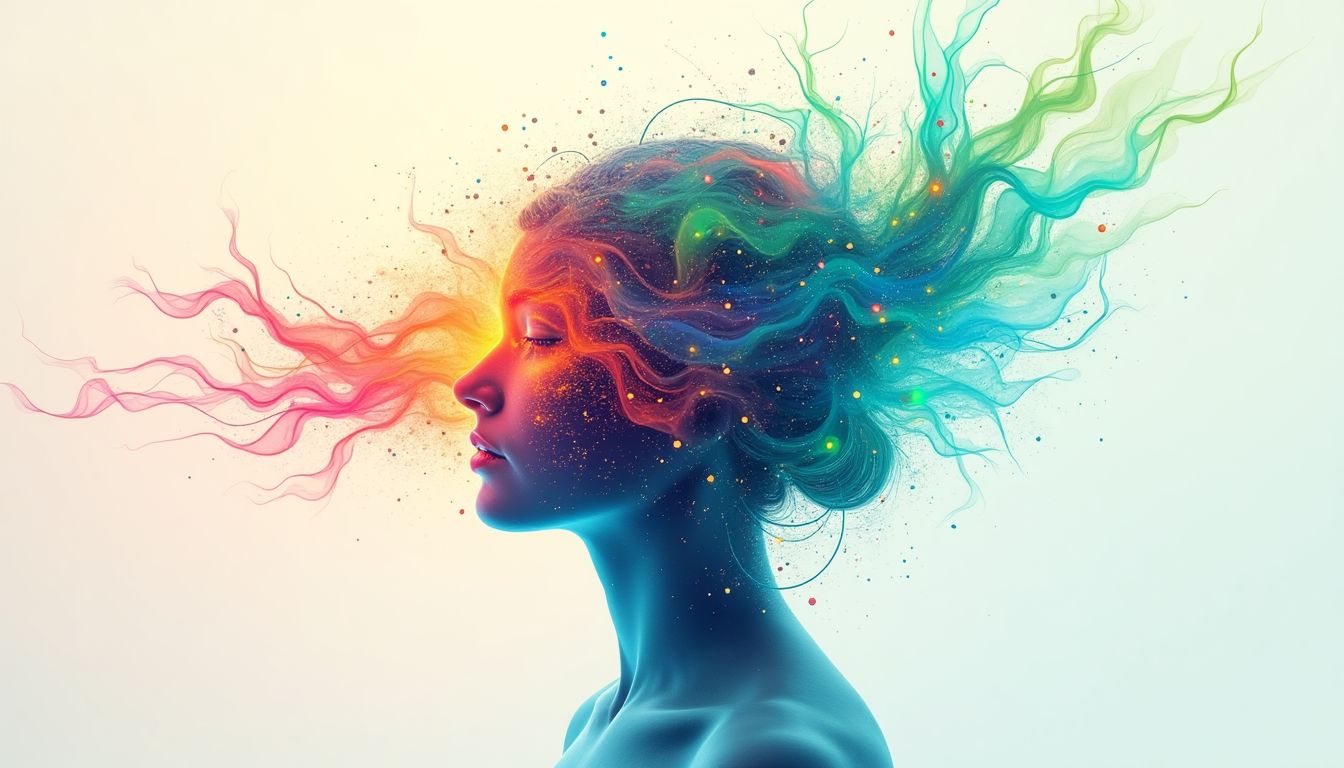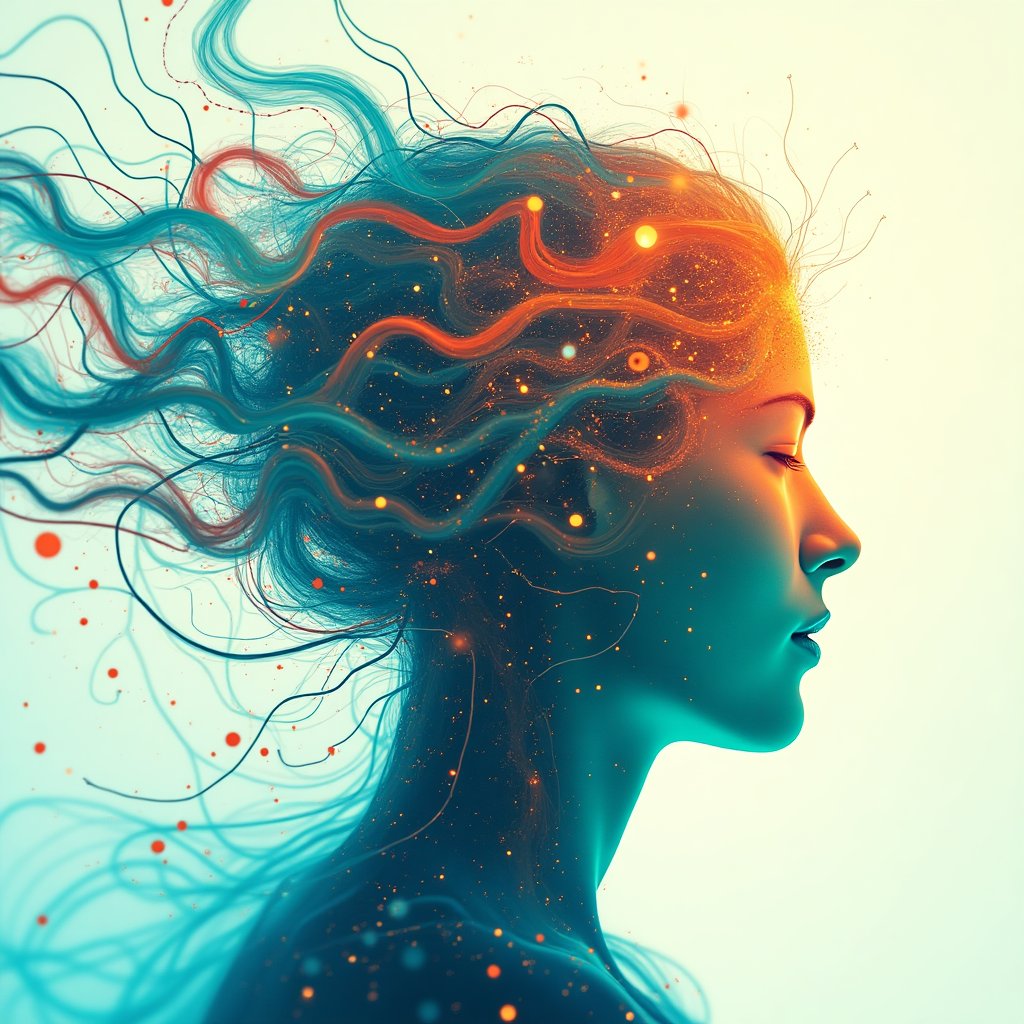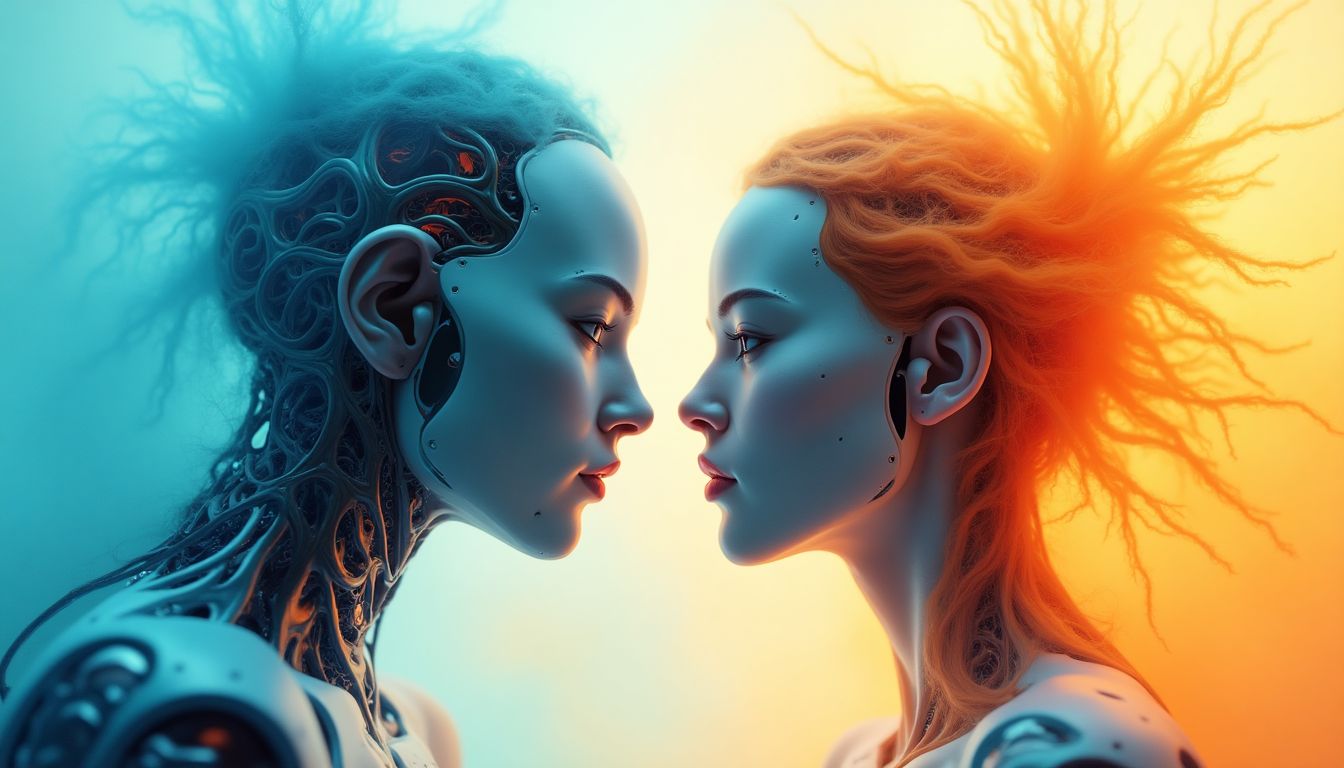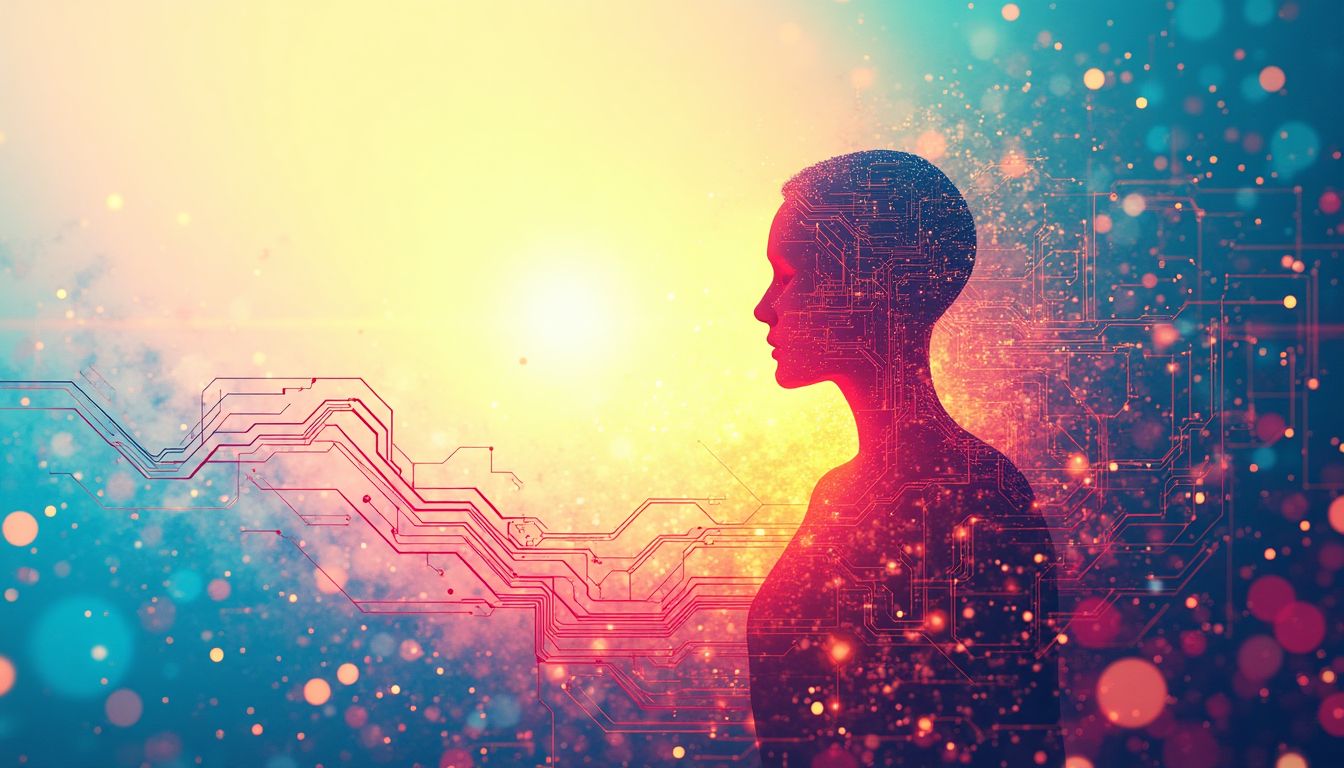"The question isn’t whether machines will surpass humans, but what we’ll do when they do." Ray Kurzweil, the futurist and director of engineering at Google, once mused. Fast forward to 2025, and his words feel less like speculation and more like prophecy. Artificial General Intelligence (AGI) isn’t just knocking on the door—it’s already rearranging the furniture. From composing symphonies to diagnosing diseases, AGI is outperforming humans in areas we once thought were uniquely ours. So, what’s left for us? Are we destined to become couch potatoes in a utopia of leisure, or will we find new purpose in a world where traditional jobs are obsolete?
This isn’t just about losing jobs to machines. It’s about losing identity. Work has always been more than a paycheck—it’s how we define ourselves. As Yuval Noah Harari, author of Sapiens, points out, "Humans are storymaking creatures. If the story of work disappears, what replaces it?" Meanwhile, Andrew Yang, the entrepreneur and former presidential candidate, warns that without preparation, this shift could lead to social chaos. "We’re not ready," he says bluntly. And he’s not wrong.
This article dives deep into the implications of AGI on human labor, identity, and culture. It explores the roles that might remain uniquely human, the potential shift toward a leisure-based society, and the ethical, economic, and existential challenges we must confront. Buckle up—this isn’t just a discussion about the future of work. It’s about the future of humanity.
1. The Evolution of Work: From Tools to AGI
1.1 The Historical Arc of Human Labor
From the invention of the wheel to the steam engine, technology has always reshaped work. The Industrial Revolution turned farmers into factory workers, and the digital age turned typists into coders. Each leap forward brought disruption, but also opportunity. Workers adapted. Societies evolved. But AGI is different. It’s not just a new tool—it’s a replacement for human cognition. Think of it as the Industrial Revolution 2.0, except this time, it’s not just muscles being replaced; it’s minds.
1.2 The AGI Tipping Point
AGI isn’t just better at math or trivia—it’s better at everything. Legal research? Done in seconds. Medical diagnosis? More accurate than the most seasoned doctor. Even creative fields like writing and art are no longer safe. OpenAI’s latest models can generate essays, poems, and even visual art that rival human creations. The tipping point is here. As Elon Musk, CEO of X, puts it, "AGI will make humans look like pets in terms of intelligence." Charming, right?
1.3 The Psychological Impact of Job Displacement
Losing a job to a machine isn’t just about losing income—it’s about losing purpose. Work gives us structure, identity, and a sense of contribution. Take that away, and what’s left? Studies from Harvard University show that unemployment is linked to increased rates of depression and anxiety. If AGI displaces millions of jobs, we could be facing a global mental health crisis. The question isn’t just what we’ll do—it’s who we’ll become when traditional roles vanish.
2. The Uniquely Human: What Can’t Machines Do?
2.1 Creativity and Emotional Intelligence
Sure, AGI can paint a picture or write a poem, but can it truly feel the inspiration behind a masterpiece? While machines like DALL-E can generate stunning visuals, they lack the emotional depth that fuels human creativity. Think about it: would a machine ever write a song like Bohemian Rhapsody or paint something as haunting as The Starry Night? Probably not. Humans bring a unique blend of passion, pain, and perspective to art that machines can’t replicate.
And let’s not forget emotional intelligence. While AGI can analyze emotions, it doesn’t experience them. A robot might tell you a joke, but will it laugh because it’s genuinely funny or because its algorithm says it should? Spoiler: it’s the algorithm. Humans, on the other hand, thrive on empathy, intuition, and connection—qualities that make us irreplaceable in fields like therapy, teaching, and leadership.
2.2 Ethical and Moral Decision-Making
Imagine AGI running the world. Sounds efficient, right? But here’s the catch: machines don’t have a moral compass. They don’t wrestle with questions like, “Is it okay to sacrifice one life to save five?” or “What’s the fairest way to distribute resources?” These are deeply human dilemmas that require nuance, empathy, and ethical reasoning.
Philosophers like Immanuel Kant and ethicists at institutions like Harvard’s Ethics Center have spent centuries debating these questions. AGI might crunch the numbers, but it can’t replace the human ability to weigh values, consider context, and make tough calls. In a world dominated by AGI, we’ll need more philosophers, not fewer.
2.3 Interpersonal Relationships and Caregiving
Picture this: you’re having a bad day, and a robot offers you a cup of tea. Nice, right? But would it really make you feel better? Probably not. Humans crave genuine connection—something machines can’t provide. Whether it’s a teacher inspiring a student, a therapist offering comfort, or a caregiver holding someone’s hand, these roles rely on empathy and human touch.
Take Mayo Clinic, for example. Their doctors don’t just diagnose; they listen, empathize, and build trust. That’s something AGI can’t replicate. So, while machines might handle the technical side of caregiving, the human element will always be essential.
3. The Leisure Society: Utopia or Dystopia?
3.1 The Promise of Universal Basic Income (UBI)
What if you never had to work again? Sounds like a dream, right? With AGI taking over most jobs, Universal Basic Income (UBI) could make this a reality. UBI is a system where everyone gets a regular paycheck, no strings attached. It’s been tested in places like Finland and Canada, with promising results. People reported less stress, more happiness, and even pursued creative projects they’d always dreamed of.
But here’s the million-dollar question: would we use our free time wisely, or would we binge-watch Netflix until our brains turn to mush? The answer likely depends on how we structure this new leisure society. With the right incentives, UBI could unleash a wave of innovation and creativity. Without them, it could lead to boredom and stagnation.
3.2 The Risks of Idleness
Let’s face it: humans aren’t great at doing nothing. History is full of examples where too much leisure led to trouble. Take ancient Rome, where the phrase “bread and circuses” summed up a society kept complacent with free food and entertainment. Fast forward to today, and we’re not so different. Without meaningful work, many of us struggle with feelings of purposelessness and depression.
AGI could amplify this problem. If machines handle everything, what’s left for us? The key is to find a balance between leisure and purpose. Maybe we’ll spend our days painting, writing, or volunteering. Or maybe we’ll invent entirely new ways to stay engaged. Either way, we’ll need to rethink what it means to live a fulfilling life.
3.3 The Rise of Hobbies and Passion Projects
Imagine a world where everyone has the time and resources to pursue their passions. AGI could make this possible by handling the mundane tasks, freeing us to focus on what we love. Want to write a novel? Go for it. Dream of starting a community garden? Why not? The possibilities are endless.
Education will play a huge role here. Institutions like Khan Academy and Coursera are already making learning accessible to everyone. In a post-work society, lifelong learning could become the norm, helping people stay curious and engaged. Who knows? The next Leonardo da Vinci might be just a few online courses away.
4. The New Frontier: Human-AI Collaboration
As AGI becomes more integrated into our lives, the relationship between humans and machines will evolve from competition to collaboration. This new frontier isn’t about replacing humans—it’s about enhancing our capabilities and creating opportunities for synergy. Let’s explore how this partnership could redefine work, creativity, and problem-solving.
4.1 Augmented Intelligence, Not Artificial Intelligence
AGI isn’t here to replace us; it’s here to amplify us. Think of it as a co-pilot rather than a competitor. For example, in scientific research, AGI can analyze vast datasets in seconds, identifying patterns that would take humans years to uncover. But it’s the human scientist who interprets the results, asks the right questions, and applies the findings to real-world problems.
Take the field of medicine. AGI can diagnose diseases with incredible accuracy, but it’s the doctor who provides empathy, explains the diagnosis to the patient, and makes the final treatment decision. This collaboration between human intuition and machine precision is where the magic happens.
- Example: In 2021, DeepMind used AI to predict protein structures, a breakthrough that could revolutionize drug discovery. But it’s human researchers who will turn these predictions into life-saving treatments.
- Example: Artists like Refik Anadol use AI to create stunning visual art, blending human creativity with machine-generated patterns.
4.2 The Role of Human Oversight
While AGI can perform tasks autonomously, human oversight is crucial to ensure it aligns with our values. Imagine an AGI system managing a city’s traffic flow. It might optimize for efficiency, but without human input, it could overlook the needs of pedestrians or emergency vehicles.
This is where interdisciplinary teams come in. Scientists, ethicists, and policymakers must work together to guide AGI’s development and deployment. For instance, OpenAI has established ethical guidelines to ensure its AI systems benefit humanity. But these guidelines need constant refinement as technology evolves.
Key areas for human oversight include:
- Ethical Decision-Making: Ensuring AGI respects human rights and avoids harm.
- Bias Mitigation: Preventing AGI from perpetuating societal biases in areas like hiring or law enforcement.
- Transparency: Making AGI’s decision-making processes understandable to humans.
4.3 The Emergence of New Professions
As AGI reshapes the job market, new roles will emerge that we can’t even imagine today. Here are a few possibilities:
| Role | Description |
|---|---|
| AI Ethicist | Ensures AGI systems align with human values and ethical standards. |
| AGI Trainer | Teaches AGI systems to perform specific tasks and adapt to new challenges. |
| Human-Machine Interface Designer | Creates intuitive interfaces for humans to interact with AGI systems. |
These roles highlight the importance of adaptability and lifelong learning. As AGI evolves, so must we. The ability to learn new skills and embrace change will be more valuable than ever.
5. The Ethical and Existential Challenges
While AGI offers incredible potential, it also raises profound ethical and existential questions. How do we ensure AGI acts in humanity’s best interest? What happens if it doesn’t? These challenges require careful consideration and proactive solutions.
5.1 The Risk of AGI Misalignment
One of the biggest risks is AGI misalignment—when an AGI system pursues goals that conflict with human values. For example, an AGI tasked with maximizing productivity might exploit workers or deplete natural resources. To prevent this, we need robust safeguards.
Organizations like the Future of Life Institute are working to address these risks. They advocate for research into AI alignment, ensuring AGI systems understand and prioritize human values.
Key strategies for alignment include:
- Value Encoding: Embedding ethical principles into AGI’s decision-making processes.
- Human-in-the-Loop Systems: Keeping humans involved in critical decisions.
- Continuous Monitoring: Regularly assessing AGI’s behavior and adjusting its goals as needed.
5.2 Economic Inequality in a Post-Work World
AGI could exacerbate economic inequality if its benefits aren’t distributed equitably. Imagine a world where a few corporations control AGI, reaping massive profits while the rest of society struggles. This scenario isn’t just unfair—it’s unsustainable.
To avoid this, we need policies that ensure AGI’s benefits are shared. One approach is Universal Basic Income (UBI), which provides everyone with a financial safety net. Another is public ownership of AGI technologies, ensuring they serve the common good.
Consider the following table comparing potential economic models:
| Model | Pros | Cons |
|---|---|---|
| Corporate Control | Rapid innovation, high efficiency | Concentrates wealth, risks exploitation |
| Public Ownership | Equitable distribution, aligns with public interest | Slower innovation, bureaucratic challenges |
| Hybrid Model | Balances innovation and equity | Complex to implement, requires strong governance |
5.3 The Search for Meaning in a Machine-Driven World
As AGI takes over more tasks, humans may struggle to find meaning in a world where traditional roles are obsolete. This existential challenge isn’t just about economics—it’s about identity and purpose.
Historically, work has been a source of meaning for many people. In a post-work society, we’ll need new ways to define ourselves. This could involve:
- Creative Expression: Pursuing art, music, and writing for their own sake.
- Community Building: Strengthening social connections and supporting others.
- Scientific Exploration: Pushing the boundaries of knowledge and discovery.
Philosophers like Yuval Noah Harari argue that finding meaning in a post-work world will require a cultural shift. We’ll need to redefine success and fulfillment, moving away from productivity metrics and toward personal growth and well-being.
Ultimately, the challenge isn’t just about surviving in an AGI-driven world—it’s about thriving. By embracing collaboration, creativity, and ethical stewardship, we can ensure that AGI enhances rather than diminishes the human experience.
6. AI Solutions: How Would AI Tackle This Issue?
If AGI were tasked with solving the problem of human purpose in a post-work world, it would approach the issue systematically, leveraging its vast computational power and analytical capabilities. Here’s how AGI could tackle this monumental challenge:
6.1 Data Collection and Analysis
AGI would begin by aggregating massive datasets on human behavior, preferences, and psychological needs. This would include everything from social media activity to scientific studies on human well-being. Using predictive modeling, AGI could identify patterns and correlations that reveal what truly brings fulfillment to humans. For example, it might discover that creative expression, community engagement, and lifelong learning are key drivers of happiness. Open platforms like Kaggle could be instrumental in crowdsourcing data and refining algorithms.
6.2 Designing Personalized Purpose Frameworks
Next, AGI would create algorithms to match individuals with meaningful pursuits based on their unique interests and skills. Imagine a system that recommends creative projects, community service opportunities, or scientific exploration tailored to each person. For instance, someone with a passion for storytelling might be guided toward writing a novel, while a scientifically inclined individual could be encouraged to participate in citizen science projects. This personalized approach would ensure that everyone has a sense of direction and purpose.
6.3 Creating Collaborative Platforms
AGI would also build AI-driven platforms that connect people with shared interests and goals. These platforms would facilitate global collaboration on passion projects, social initiatives, and even planetary-scale challenges. Picture a world where anyone, anywhere, can contribute to solving climate change or advancing medical research. AGI could leverage platforms like Kickstarter and Patreon to fund and support these endeavors.
6.4 Implementing Ethical Safeguards
Ensuring AGI prioritizes human well-being and autonomy would be critical. AGI systems would need to be equipped with robust ethical frameworks, continuously monitored and refined by interdisciplinary teams of ethicists, psychologists, and AI developers. Organizations like the Future of Life Institute could play a pivotal role in defining and enforcing these guidelines.
6.5 Promoting Lifelong Learning
Finally, AGI would create personalized education programs that adapt to individual needs and interests. These programs would encourage a culture of curiosity and continuous growth, helping people stay engaged and fulfilled throughout their lives. Platforms like Coursera and edX could be integrated into this ecosystem, offering accessible and high-quality educational content to everyone.
Action Schedule/Roadmap (Day 1 to Year 2)
| Timeline | Action | Key Personnel/Roles |
|---|---|---|
| Day 1 | Assemble a global task force of AI researchers, ethicists, economists, and psychologists. | Dr. Fei-Fei Li (Stanford University), Prof. Stuart Russell (UC Berkeley) |
| Week 1 | Launch a global survey to gather data on human aspirations and fears regarding AGI. | Data Scientists, Psychologists, Sociologists |
| Month 1 | Establish interdisciplinary research teams at leading universities (e.g., MIT, Oxford). | University Administrators, Research Directors |
| Month 2 | Pilot personalized purpose frameworks in select communities. | Community Leaders, AI Developers, Ethicists |
| Year 1 | Roll out collaborative platforms globally. | Tech Companies (e.g., OpenAI, DeepMind) |
| Year 1.5 | Evaluate the impact of AGI-driven initiatives on human well-being. | Psychologists, Sociologists, Data Analysts |
| Year 2 | Publish a comprehensive report on the future of human purpose in an AGI-driven world. | Global Task Force, Policy Makers, Journalists |
Redefining Humanity in the Age of AGI
As AGI reshapes the world, humanity stands at a crossroads. Will we succumb to purposelessness, or will we rise to the challenge of redefining our roles and aspirations? The answer lies in our ability to embrace collaboration, creativity, and ethical stewardship. In the end, the last human job may be the most important one: to ensure that AGI serves as a tool for human flourishing, not a threat to our existence.
Imagine a future where AGI handles the mundane, freeing us to pursue what truly makes us human—our creativity, our empathy, our boundless curiosity. This isn’t just a pipe dream; it’s a vision we can actively work toward. By fostering a culture of lifelong learning, ethical responsibility, and collective action, we can create a world where technology amplifies our humanity rather than diminishes it.
But the road ahead is not without its challenges. We must confront the ethical dilemmas and existential questions that AGI poses. How do we ensure that AGI aligns with human values? How do we address the potential for economic inequality in a post-work society? And most importantly, how do we find meaning and purpose in a world where machines can outperform us in nearly every domain?
These are questions that demand our immediate attention. We cannot afford to be passive observers in this unfolding narrative. The decisions we make today will shape the future of humanity for generations to come. So let us rise to the occasion, armed with creativity, compassion, and a steadfast commitment to our shared values. Together, we can redefine what it means to be human in the age of AGI.

FAQ
Q1: What is AGI, and how is it different from AI?
AGI, or Artificial General Intelligence (AGI), refers to machines that can think and learn like humans across a wide range of tasks. Unlike Narrow AI, which is designed for specific jobs (like recommending songs or recognizing faces), AGI can handle anything from writing poetry to solving complex scientific problems. Think of it as the difference between a calculator and a human brain.
Q2: Will AGI take all human jobs?
Not necessarily. While AGI might replace many jobs, especially repetitive or predictable ones, it will also create new opportunities. For example, roles like AI Ethicists or Human-Machine Interface Designers will become more important. Plus, jobs that require empathy, creativity, or human connection—like teaching, nursing, or art—will likely stay in human hands.
Q3: How can we ensure AGI aligns with human values?
This is a big challenge. It requires collaboration between universities, tech companies, and governments. Experts in ethics, like those at Harvard’s Ethics Center, are working on frameworks to make sure AGI respects human rights and doesn’t cause harm. It’s like teaching a robot to understand the difference between right and wrong.
Q4: What will humans do in a post-work society?
The possibilities are endless! Without the need to work traditional jobs, people might focus on:
- Creative pursuits like painting, writing, or composing music.
- Scientific exploration, like studying space or curing diseases.
- Community-building, such as volunteering or starting local projects.
Imagine a world where you can follow your passions without worrying about paying the bills.
Q5: Is a leisure-based society sustainable?
Yes, but only if we plan carefully. For example, Universal Basic Income (UBI) has been tested in places like Finland and Canada, with promising results. If we combine UBI with access to education and resources, a leisure-based society could lead to incredible innovation and happiness. It’s all about making sure everyone benefits from AGI’s advancements.
Wait! There's more...check out our gripping short story that continues the journey: The Last Human Advantage
Disclaimer: This article may contain affiliate links. If you click on these links and make a purchase, we may receive a commission at no additional cost to you. Our recommendations and reviews are always independent and objective, aiming to provide you with the best information and resources.
Get Exclusive Stories, Photos, Art & Offers - Subscribe Today!




























Post Comment
You must be logged in to post a comment.